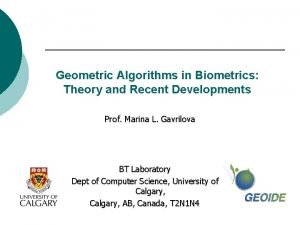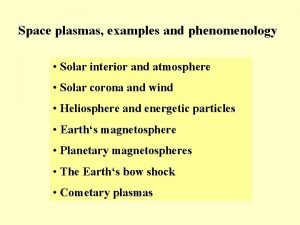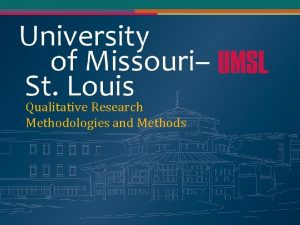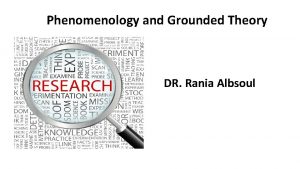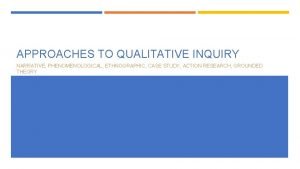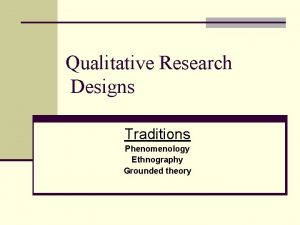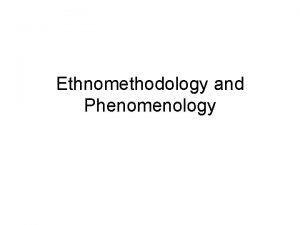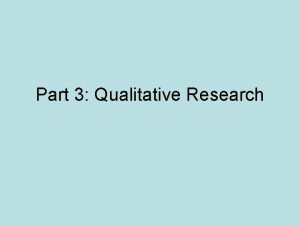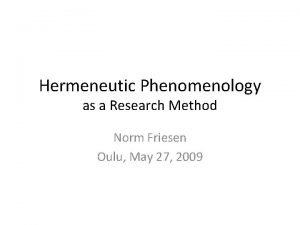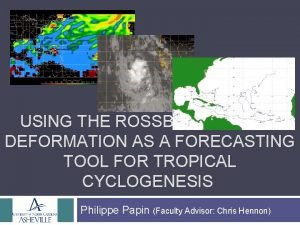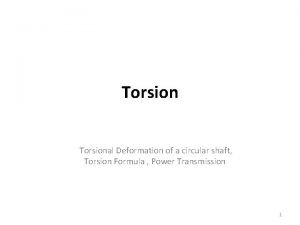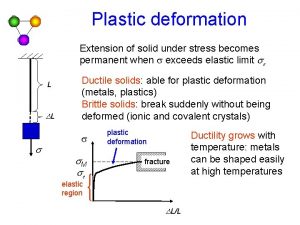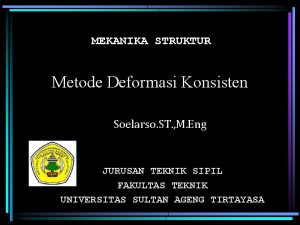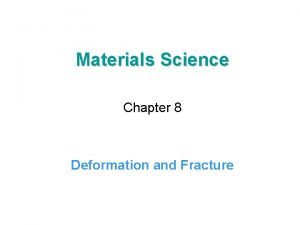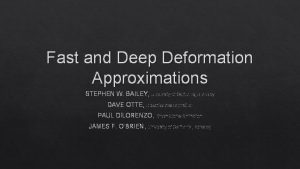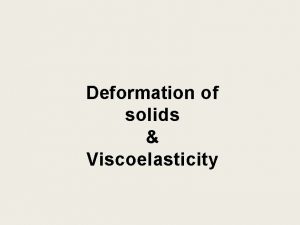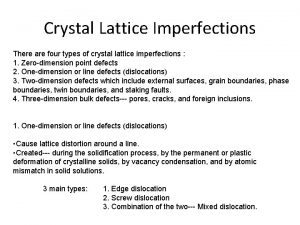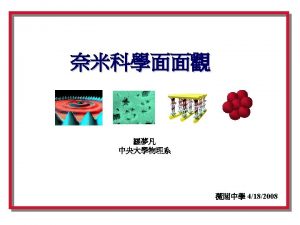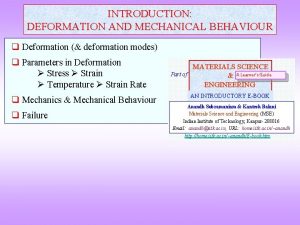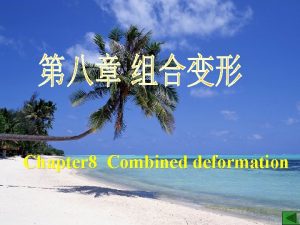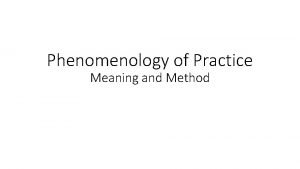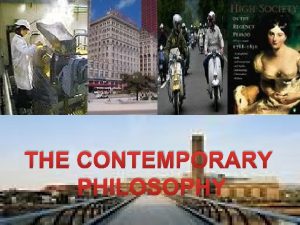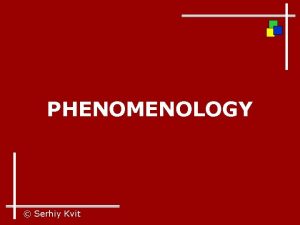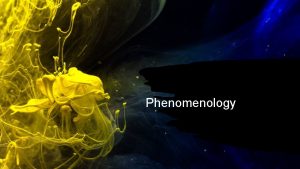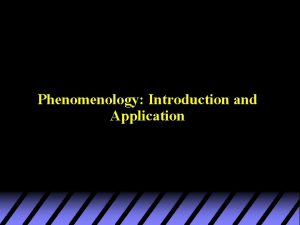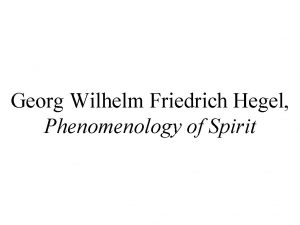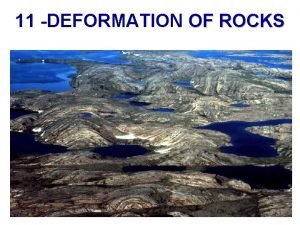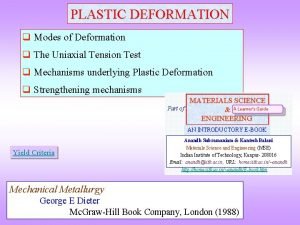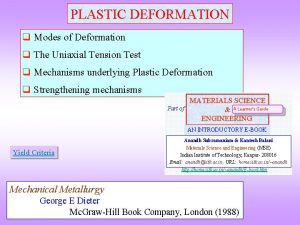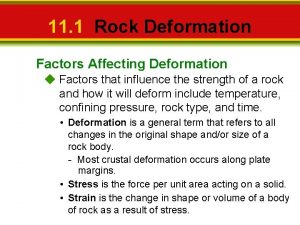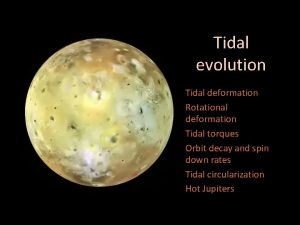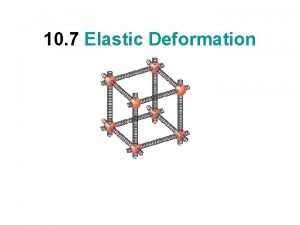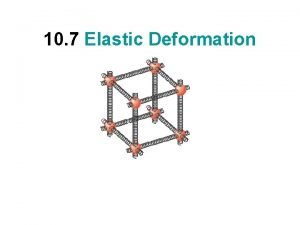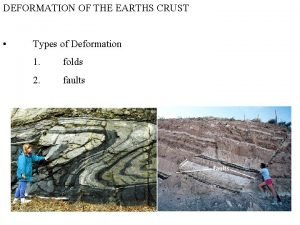Applications of quantisation deformation to standard model phenomenology























- Slides: 23

Applications of quantisation deformation to standard model phenomenology: flavor symmetry NIELS GRESNIGT XI’AN JIAOTONG-LIVERPOOL UNIVERSITY SUZHOU, CHINA 5 th International Conference on New Frontiers in Physics (ICNFP 2016) July 6 – 14, 2016, Kolymbari, Crete, Greece ar. Xiv: 1607. 01632

Overview 1. Deformation of symmetries § Lie deformations and stability of a Lie algebra § Deformations of enveloping algebra and quantum groups 2. Example: Deformed flavor symmetry § SU(3) flavor symmetry and Gell-Mann-Okubo mass formulas § SUq(3) flavor symmetry and deformed mass formulas § Charge specific baryon mass formulas with deformed SUq(3) flavor symmetry § Cabibbo angle as a function of q and baryon spin 3. Conclusion § Further applications of quantum groups to HEP § Summary

Lie-type deformations of spacetime symmetries § Algebraic deformations provide a consistent framework within which to generalize the symmetries of spacetime and particles. § A deformation is said to be trivial is the deformed algebra is isomorphic to L 0. An algebra is stable (rigid) if every deformation is trivial. Semi-simple algebras are stable. Theories based on unstable Lie algebras should be deformed until a stable theory is reached. Theories based on stable Lie algebras give rise to robust physics free of fine tuning issues. § Galilean Relativity Special Relativity (anti) de Sitter relativity

Hopf-type deformations and particle symmetries § d. S/Ad. S is stable (rigid) which means it can’t be deformed in the category of Lie group. However it can be deformed in the category of Hopf algebras. § A quantum group arises from a deformation of the enveloping algebra (a Hopf algebra) of a semi-simple Lie algebra. Applications to SM physics: 1. q-deformed gauge groups: SU(2)x. U(1) Suq(2) § solitonic interpretation of elementary particles (Finkelstein) § Particle properties expressed in terms of knot invariants 2. q-deformed flavour symmetry: SU(3) SUq(3) § Improved baryon mass relations § Connection between deformation parameter and Cabibbo angle

SU(3) flavor symmetry and Gell-Mann. Okubo mass formulas

SU(3) flavor symmetry and Gell. Mann-Okubo mass formulas § Gell-Mann-Okubo formula § Octet Baryons § Decuplet Baryons § Okubo formula (valid to 2 nd order flavor symmetry breaking)

SUq(3) flavor symmetry and deformed mass formulas

SUq(3) flavor symmetry and deformed mass formulas

SUq(3) flavor symmetry and deformed mass formulas § General procedure

SUq(3) flavor symmetry and deformed mass formulas Octet Baryons § Deformed mass formulas depends on the deformation parameter qn. § Infinite sequence of mass formulas, one for each integer n. § Best fit to data when n=7. Error of only 0. 06%

SUq(3) flavor symmetry and deformed mass formulas Decuplet Baryons § Holds to first order flavor symmetry breaking (like the equal spacing rule). § Rearranging into a form reminiscent of Okubo formula gives formula that holds to second order flavor symmetry breaking § Good fit to data for a range of values for q=qn. n=14 considered by Gavrilik § Solving for n yields n=15. 7, so n=16 would give a better fit

SUq(3) flavor symmetry and deformed mass formulas Octet-Decuplet mass relation § Solve both the octet and decuplet formula for [2]q to obtain a relation between the octet and decuplet baryon masses. § Assumes that q=q 14 for octet baryons and q=q 21 for decuplet baryons. § Error or around 1. 5%

Electromagnetic contributions to baryon masses § In the standard theory as well as in the deformed octet and decuplet formulas considered, the baryon masses used are the averages of the baryons masses within a specific isospin multiplet § Mass splittings within isoplets comparable errors in the deformed octet and decuplet formulas. § For deformed relations to be meaningful we must take into account the EM contributions to baryon masses.

Electromagnetic contributions to baryon masses § Electromagnetic contributions to baryon masses determined within QCD general parametrization scheme in spin-flavor space. § To zeroth order, the electromagnetic contributions given in terms of four parameters.

Electromagnetic contributions to baryon masses Octet Baryons § The standard Gell-Mann-Okubo formula becomes § Equal electromagnetic contributions on both sides. § Error of around 0. 13%. Roughly a factor of 4 reduction in error compared to standard GMO formula.

Electromagnetic contributions to baryon masses Decuplet Baryons § Equal spacing rule only valid at first order flavor symmetry breaking. At second order, only the Okubo relation continues to hold. § Applying the same parametrization as for octet baryons one finds § Charge specific decuplet formula with equal electromagnetic contributions is: § Accurate to about 0. 67%. A factor of about two reduction in error compared to Okubo formula.

Charge specific baryon mass formulas with deformed SUq(3) flavor symmetry Octet Baryons § Take the deformed octet mass formula and balance EM contributions to masses one obtains § n=7 still the best fit to data (assumed in the above formula) § Error of about 0. 02%

Charge specific baryon mass formulas with deformed SUq(3) flavor symmetry Decuplet Baryons § Applying EM correction to decuplet formula gives § Accuracy depends on value of q=qn. n=14 no longer a very good choice. § Solving for n gives n=22 as best fit. We choose n=21 however (because 21=3 x 7). § For n=21 we get: § Error of about 0. 08%

Charge specific baryon mass formulas with deformed SUq(3) flavor symmetry New Octet-Decuplet mass relation § Choosing n=21 we obtain § Solving the charge specific octet and decuplet formulas for [2]q and applying the above relation we get a new octet-decuplet formula § Error of around 1% (compared to 1. 5% for non charge specific deformed formula).

The Cabibbo angle as a function of q and baryon spin § Relationship between q and the Cabibbo angle suggested by Gavrilik § With n=21 for the charge specific deformed decuplet formula we instead obtain the relation § The Cabibbo angle is now a formula of the deformation parameter q and the spin of the baryons

Outlook of further applications of quantum groups to particle symmetries Cabibbo angle and CKM matrix § Value of π/14 slightly outside the experimental range § Could replace the standard trigonometric functions by their qdeformed version § For a suitable value of q the experimental data might agree with a value of π/14 for the Cabibbo angle Neutrino oscillations § Use q-deformed trigonometric function in PMNS matrix § If Cabibbo angle can be related to a deformation, perhaps θ 13 can too. θ 13 confirmed as nonzero. Allows for CP violation. Baryon/Meson interactions and decays § Calculate correction to lifetimes, branching ratios, etc.

Summary Octet Baryons Decuplet Baryons § Mass relations relies on complex q. Fitting of Cabibbo angle gives real q. Likely need to consider multiple deformation parameters. § Complex q for internal symmetries? Real q for deformed spacetime?

THANK YOU
 Elastic compliance
Elastic compliance Fingerprint terminology
Fingerprint terminology Examples of phenomenology
Examples of phenomenology Qualitative research process steps
Qualitative research process steps Phenomenology vs case study
Phenomenology vs case study Strength and weaknesses of phenomenology
Strength and weaknesses of phenomenology Phenomenology vs grounded theory
Phenomenology vs grounded theory Phenomenology vs ethnography
Phenomenology vs ethnography Phenomenology and ethnography
Phenomenology and ethnography Ethnomethodology and phenomenology
Ethnomethodology and phenomenology Types of phenomenology
Types of phenomenology Sampling in qualitative research
Sampling in qualitative research Characteristics of a dystopian society
Characteristics of a dystopian society Narrative data analysis example
Narrative data analysis example Hermeneutic phenomenology concept map
Hermeneutic phenomenology concept map Rossby radius of deformation
Rossby radius of deformation Circular shaft formula
Circular shaft formula Rolling deformation process
Rolling deformation process Elastic and plastic deformation
Elastic and plastic deformation Consistent deformation method
Consistent deformation method Elastic and plastic deformation
Elastic and plastic deformation Fast and deep deformation approximations
Fast and deep deformation approximations Viscoelasticity
Viscoelasticity Types of imperfections in crystals
Types of imperfections in crystals

